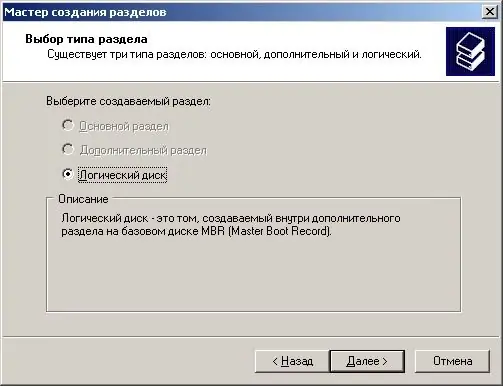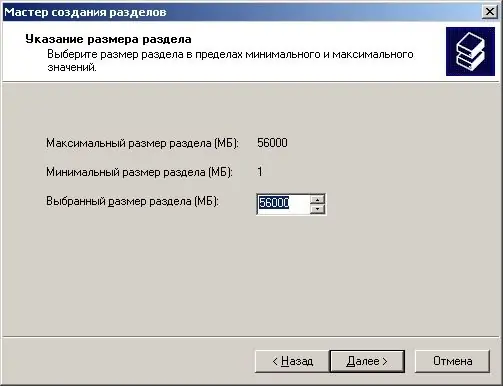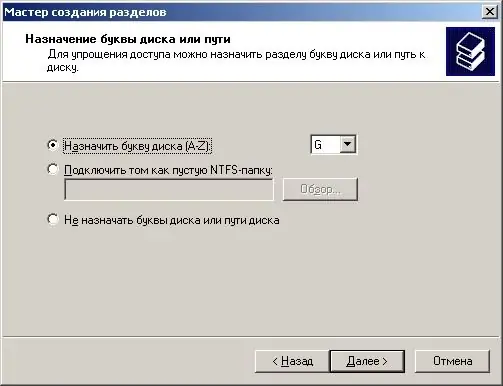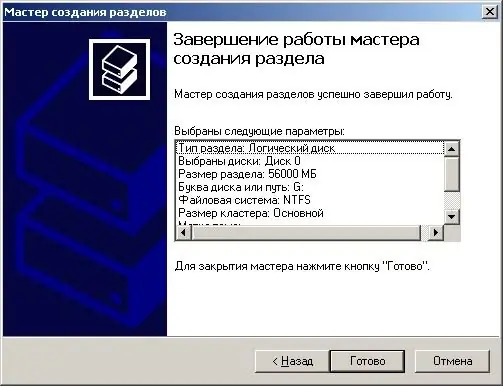For separate and secure storage of information, it is useful to create a logical disk (or maybe more than one) in an additional partition of the physical disk. The probability of simultaneous damage to information on several disks at once is very low. The main disk contains the operating system and applications, the logical disk contains backups, documents, music, films, photos, etc. Having a disk containing backups avoids a lot of troubles. For example, if you need to format one of the disks, it is possible to copy data from one disk to another.

Necessary
- Computer with Microsoft Windows XP operating system;
- Mouse and keyboard skills;
Instructions
Step 1
Log on to the computer with an administrator account or a member of the Administrators group.
Step 2
Click "Start" -> "Settings" -> "Control Panel" -> "Administrative Tools" -> "Computer Management".
Or right-click on the "My Computer" icon on the desktop or in the "Start" menu and select the "Manage" line in the menu that opens; On the left side of the "Storage Devices" window that opens -> "Disk Management"
The Disk Management console can also be launched by entering diskmgmt.msc in the Run … field of the Start menu.
Step 3
To create a logical drive, right-click on the free space in the secondary partition where you want to create it. In the context menu that appears, select the Create Logical Disk item.
Step 4
In the next window, select the type of partition to be created - Primary or Logical (by default, Primary partition is selected), "Next". You can create several partitions on one physical disk, but no more than four primary ones. One or more logical drives can be created in an additional partition. The main one differs from the additional one in that the main partition can be used to start the operating system, but the logical one cannot.

Step 5
Select the size of the partition to be created (by default, the maximum possible size is set).

Step 6
Select a drive letter. It can be any letter of the Latin alphabet that is not yet used to designate another disk or partition.

Step 7
Specify the formatting parameters (file system type (NTFS by default), cluster size (I advise you to leave "Default"), volume label, whether to apply fast formatting and compression of files and folders), when completing the selection, click the "Next" button.

Step 8
Before completing the Partition Wizard, a window will be shown containing a summary of the options we have selected. If everything matches your choice, click "Finish".

Step 9
When formatting is complete, the “Not Distributed” mark will change to “Good”. You can get to work.






